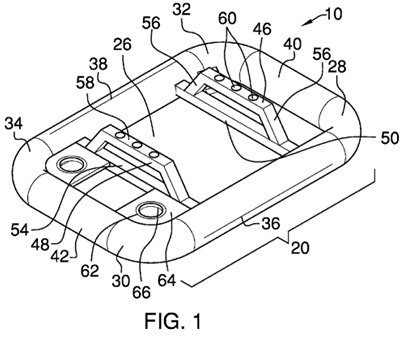On July 24, 2023, the US Patent & Trademark Office (PTO) announced that a revised interim Director Review (DR) process and Appeals Review Panel (ARP) process will replace the Precedential Opinion Panel Process. Updates to the interim DR process include the following:
- Expanding the process to permit parties to request DR of Patent Trial & Appeal Board decisions on institution in America Invents Act (AIA) proceedings
- Providing updated guidance as to what types of issues the Director will consider in DR, as well as additional guidance on several topics, such as the initiation of DR at the sole discretion of the Director (sua sponte DR), remands to Board for further proceedings and the Director’s sanction authority
- Providing the Director with the option to delegate review to a new independent panel called the Delegated Rehearing Panel (DRP)
- Creating a new ARP, which may be convened by the Director sua sponte to review Board ex parte, reexamination or reissue appeal decisions.
Under the interim DR process, a party to a Board decision may now request DR of a Board decision, whether to institute trial, a final written decision or a decision granting a request for rehearing.
After a DR request is received and processed, the request will then be routed to an Advisory Committee that the Director has established to assist with the process. The Advisory Committee comprises 11 members and includes representatives from various PTO business units who serve at the discretion of the Director. A quorum of seven members is needed for the committee to meet. The Advisory Committee may include members from the following business units:
- Office of the Under Secretary (not including the Director or Deputy Director)
- The Board (not including members of the panel for each case under review)
- Office of the Commissioner for Patents (not including the Commissioner for Patents or any persons involved in the examination of the challenged patent)
- Office of the General Counsel
- Office of Policy and International Affairs.
The Director will review each request for DR; the underlying decision, including the associated arguments and evidence; and the recommendation of the Advisory Committee. The Director will then determine whether to grant or deny review or delegate a decision to a Delegated Rehearing Panel (DRP). The DRP will be selected from among the Chief Judge, Deputy Chief Judge, Vice Chief Judges and Senior Lead Judges of the Board, excluding judges who served on the original panel for the case under review or otherwise have a conflict with the case. An appellant can request a rehearing of a DRP decision or appeal the decision to the US Court of Appeals for the Federal Circuit.
An ARP that consists of the Director, the Commissioner for Patents and the Chief Judge of the Board has now been created. The panel may be convened by the Director sua sponte to review ex parte, reexamination or reissue appeal decisions. Requests for ARP review will not be considered. ARP decisions are appealable to the Federal Circuit. An appellant may not [...]
Continue Reading
read more

 Subscribe
Subscribe



